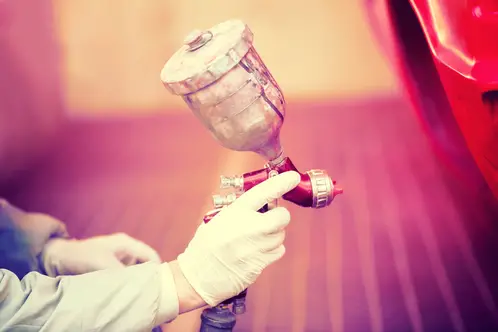What kind of paint primer should I use? An undercoat is a paint, also known as primer or paint primer. Often more liquid than a paint, it has components that enable it to make the surface uniform, to block it so that it does not use a lot of your finishing paint.
Moreover, it adheres perfectly even on surfaces such as iron and plastic with special adhesion primers. The undercoat is usually white, but can you can tint it to obtain nice colors with the paint behind, especially in very dark colors.
You should apply it as a first coat, after you finish preparing your surface. Remember you prepare the surface by filling holes and cracks, smoothing with plaster if necessary, and sanding. Let us find out the best paint primer to use.
What Kind of Paint Primer Should I Use
The Purpose Of Primer Or Undercoat
Generally, an undercoat makes your finishes more beautiful and more solid, and will save you time and money. More specifically, an undercoat or primer will:
Enable your finishing paint to adhere perfectly to the surface, and therefore, be more resistant. This is even essential on so-called special or blocked surfaces. They include non-porous tiles, earthenware, metals, plastic, and laminate. Otherwise, your paint will not hold.
Allow you to block porous or absorbent surfaces such as plaster or wood. If you don’t use it, your first coat of finishing paint will be absorbed by the plaster or any other porous surface. You will therefore, have to multiply the layers of finishing paint in order to obtain a satisfactory result.
Surfaces never have the same porosity over the whole area: For example, the hole filled with plaster will not have the same porosity as the plaster next to it. Your undercoat will allow you to homogenize the surface and thus to have a more aesthetic finish.
Finally, some undercoats have specific technical characteristics that allow you to respond to a certain number of problems. They can be:
- Included with an anti-rust agent in order to block the corrosion of nails, screws, and other metal parts
- Made with resin to consolidate walls that tend to crumble
- Enriched with a product allowing them to block the rise of tannin, humidity, greasy stains, and soot
What Kind of Paint Primer Should I Use – Is An Undercoat Indispensable?
On some surfaces, you can theoretically do without one. For example, when you repaint on an old paint or it would be enough to wash to degrease the surface.
However, on a satin paint and especially on a glossy paint, your new layer may not adhere well without an undercoat. In addition, on other surfaces, the undercoat is perfectly essential.
Keep in mind that in more than 90% of the cases the undercoat will allow you to save time and money. An undercoat is often cheaper than a paint, and has better solidity and aspect of finish.
In short, we recommend that you systematically apply an undercoat before painting.
Attention: You must cover an undercoat with a finishing paint. Not only does it not have the protective qualities of a paint, but it is also often sensitive to UV rays and could be susceptible to yellowing.
Moreover, today there are 2-in-1 multi-surface paints, which adhere perfectly to many surfaces. They also act as both an undercoat and a topcoat.
The Undercoat to Choose
Should I use a glycerol or acrylic undercoat? A universal or specific undercoat?
Each case has its own undercoat; read the descriptions and technical data sheets carefully to make your choice according to your issues and problems.
Conclusion – What Kind of Paint Primer Should I Use
It is best to use glycerol undercoats outdoors, for bathrooms and showers, and for walls or ceilings that have moisture problems. They are often stronger and because of their solvent less sensitive to water.
You will find in particular the universal interior and exterior glycerol undercoat to be the best. For other cases, use an acrylic undercoat.

